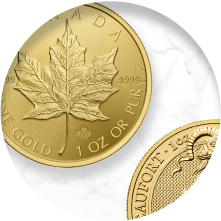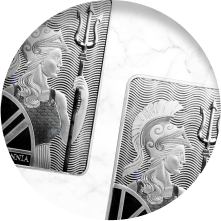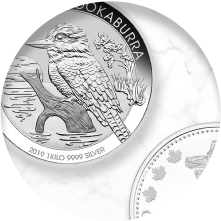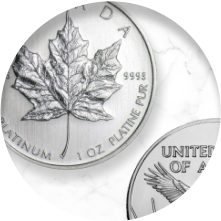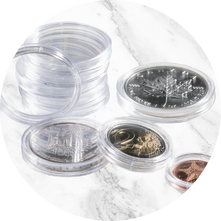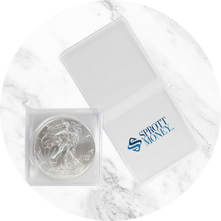Ask The Expert - David Morgan - January 2016

January 29, 2016
A precious metals aficionado armed with degrees in finance and economics as well as engineering, he created the Silver-Investor.com website and originated The Morgan Report, a monthly that covers economic news, overall financial health of the global economy, currency problems, and the key reasons for investing in precious metals.
David considers himself a big-picture macroeconomist whose main job is education — educating people about honest money and the benefits of a sound financial system.
We've increased silver production at about a 2 to 3% compounded rate for those last 15 years. So when I say it's 50% of the market and that's a steady number, it is. But nonetheless, it's based on a growing supply of silver for mining activity, and recycling somewhat, but mostly from mining activity of just looking at the mining area.
Craig: So then, is it a combination of the two, David?
David: Yeah.
Craig: Or do you think one plays a more important role than the other?
David: I think that it's always been monetary demand is the most important role. And I also think that you're a little misspoken. I'm not picking on you, Craig, at all...
Craig: No, that's okay.
David: ...it's me, too, because it took me a while to figure this out. That the retail demand, we think of as Silver Eagles and other coins and small bars, and that's true, that's a retail product. However, if you survey all of the largest dealers, which I'm friends with a lot of them, what you'll find is that the retail demand hasn't been there, but the retail product demand has been there. So I'm not trying to be funny, I'm trying to be very concise and precise so everyone gets this.
So what's happening is this demand for Eagles isn't coming from your silver stackers. Oh, yes, somewhat it is. But it's somebody out there in the investment side or the banking side, or both, that's buying these Eagles. So it could be a bank, a hedge fund, or something along those lines; money manager, that type of thing.
Craig: David, people are going to start to wonder if I fed you these questions ahead of time, and I can assure everyone I did not. But it's such another perfect segue to question number three. It's like we rehearsed this or something. Question number three comes from another Sprott Money customer wanting to know...there's these theories out there, Ted Butler is a proponent of one of them. That says a lot of this Silver Eagle demand, investment demand for silver, is, in fact, coming from a bank. Ted specifically thinks it's from J.P. Morgan. The question number three to you is how do you feel about that theory? Do you think there's any validity to it? It sounds like you do think there is some validity.
David: At first, I was a little skeptical until I started doing research and started doing phone calls, and really got data that I could believe and people I trust. And it led me to believe that Ted's right from the aspect that it's some type of demand, that it's not your little silver stacker community.
However, on the J.P. Morgan, I would tend to disagree with him. I did an update for our members only where I'd go in and it's my voice, and I bring up the charts, and I bring up the public data. And I showed them J.P. Morgan's specific amount in both the registered and eligible categories that they are supposed to report, which obviously, do report, whether or not its facts or not could be questioned. But nonetheless, it's not nearly the amount that Ted is alluding to. I'm not saying he's wrong. What I'm saying is the facts that you can get from the public domain do not bear it out.
What I can say is that it's going somewhere. And somebody with big pockets is scooping up a lot of this retail product. And then of course, there's two thoughts on it. There's one that's Ted Butler thought that, "Well, they're going to squeeze the market, and they're going to up and up, and they've got all the silver, so they can supply the market when it gets to the price that they want." And I don't want to speak for Ted, that's the way I read it. You can interpret it however you wish.
And then there's the other side of the coin, that if they do...and I'm not saying J.P. Morgan specifically, but you can use that as a metaphor or directly, it's up to you. You could say somebody's out there with a big supply, so if it starts to rise, they could squash the market physically with all these Eagles. So there's two ways to look at that. I look at it kind of at a neutral...it could be either one. I tend to believe it's more on the upside, let it run. If you look...if you've studied the markets as long as I have...I'm certainly not a know-it-all, but certainly, I've put in my dues and put in my time. And I forget the name of the gentleman...I think it was Ted Williams, but he wrote a book, a very expensive book. But he talks about the accumulation phase, the markup, and the distribution phase.
And what that means in stocks, commodities, almost anything that has a market to it is there's a low price, maybe below production for a commodity, and the smart money, or big money, or bank money, however you want to think of it, goes in and starts to accumulate. So they accumulate meaning they buy over time at a slow amount or a low amount because they can't buy a lot or it'll move the price. They don't want to move the price, they want to keep it low. So they accumulate and accumulate. Once they've accumulated what they need where they could either control the market or certainly have large participation, then they withhold. And they let the public in and they start the markup phase. So that takes the price up substantially higher. And then when they get the price high enough, then they do the distribution phase, which is kind of the opposite of the accumulation phase. They feed this stock or commodity into the market; although, a lot of time ... as the market demands it, until they have distributed all or near all of their earlier purchase. And then, of course, the markdown starts and the whole game starts over again.
So is that accurate? Yeah, I think it is, for most of the markets.
Craig: All right.
David: So having said all that...and I think it's worth saying it, Craig, because it gives people kind of an idea of what to expect going forward. That's how I think it'll play out.
Craig: Well, again, I think that dovetails into the next question. We've seen reports...I think it was Thomson Reuters...GFMS had the report a couple of months ago that mentioned that the world is running at a silver supply deficit now three years in a row. We're consuming more than we are producing globally. Now, silver mining, as most folks know, is actually, primarily, let's put it that way, a byproduct of base metal mining. I think if the numbers I've seen are right, about 25% comes from primary silver miners. Maybe 75% comes as a byproduct of mining copper and zinc and the like. As you mentioned, those commodities, copper, zinc, all the other base metals, are all having...in terrible bear markets and down. Are you starting to see yet a decline in the silver supply based upon a decline or struggles in the base mining industry?
David: Yes, but it's pretty minor at this point. But 2% of 1 billion is a big number. And that's what we're talking, there's about a billion ounces of silver on an annual basis, round number is 800 million is mined, 200 million is from recycling. So 2% is still 2%. And that's probably what we're going to see this year. I haven't read the press releases yet. I know one of them is out, I think, from Thomson Reuters on what they think and I could be off; they may say 3%. My number isn't really better than theirs, but it's in that range.
I do want to say, though, that the way that the Silver Institute reports a deficit is a little different than the way I would do it. And we point that out in the book. We've also pointed that out in the Morgan Report. CPM still shows a surplus in those same three years. I look at both studies. In the book, we go through both of those studies for anyone that really likes to delve deeply into this market, and see how we analyze it.
For example, some of the CPM stats are not as accurate as we think they could be because they leave out some bar investment that's obviously physical and could be accounted for. I'm not [inaudible 00:15:00] to split hairs, but I am in a way. I just contradicted myself, if you really want to get in the numbers, which we do. So is it a deficit? Yes, probably slightly, but the way I would do the numbers, the way I would account for it would be a little different than the way they do. And I'm not trying to make it a right/wrong thing. I'm just trying to give people a balanced view.
One of the big things about the silver shortage...and I take a little bit of a contrary view to that, I love to see a silver shortage, believe me, no one on the planet probably as much as me. But nonetheless, there's been a deficit for 16 years; it was overcome about 2006. In the last 10 years, we've seen increased mining production that's been compounding at a pretty big rate, and the accumulation level from the low of what was the above-ground silver supply...when I say "silver supply," I mean commercial bars was at 500 million ounces about 2006, and now we're probably at a billion. In the meantime, a lot of that silver has been siphoned off into the retail market meaning the Silver Eagles that you talked about, Canadian Maple Leafs, the Lunar series, Philharmonics, et al. It's about a billion ounces in that category, meaning silver government coins and rounds.
So the build has been there, Craig. So to say that there's a shortage, certainly, there has been shortages temporarily on the retail side, and I get that. And the retail side makes up a much more important part of the market than it used to. It used to be maybe 5%, and now it's maybe 15%. Or at least 10%, it depends on the year. I'm just trying to be objective here.
Craig: Sure. But you haven't necessarily seen a flow of lesser demand due to a slowdown in base metal mining? Not so much yet?
David: No. The demand for silver is pretty steady on the industrial side, off slightly. Let's say on the monetary or investment side, it's pretty steady to increasing.
Craig: Fair enough. All right, the next question kind of goes off in a different direction. But a guy wrote in and said he had recently purchased 20 numismatic coins. And he found out too late after he got home that one of them was a counterfeit. I don't know if you'd kind of chalk it up as a learning experience. But for you...is there a common way, do you think, for folks that get into this, that they can determine...what's the easiest way to tell whether something is counterfeit or not?
David: That's a tough one.
Craig: Yeah.
David: Especially if they're slab coins. That's one of the reasons I've pretty much stayed away from them. I do have a few. Mine are schoolboy-type investments. These are a little slabbed and certified by either PGMS or NGC. And that's supposedly a guarantee; I don't know what the guarantee really is. I know they're slabbed and they're inspected. But you could counterfeit those slabs. So I don't know. I have a few pandas that I like, and I bought them at the right time. I have some that are Morgan dollars, big surprise there. But they're like MS whatever, 65s or something. And I bought them not for melt value, but not very high; silver is at $5.
But I really don't have any advice except know who you're dealing with. And it's really tough, again, because there's a lot of money that can be made in that very small part of the industry, which is the rare coin market. And if you're able to make a coin that's rare and put it in a plastic container and then fake the...or get somebody that's willing to do it that works at one of these places. And I don't want to bad-mouth anyone or scare anyone. What am I saying is that it does take place, and how you prevent...I don't know.
Craig: Right. Maybe, if anything, the answer is just simply make sure you're dealing with as most trustworthy and honest dealers and coin sellers as you can, and do your due diligence as best you can. David, one last final question besides the straight up, the metal. You also take a look at miners and you examine miners in your book, "The Silver Manifesto." Mining shares have been trying the bottom, it's been a brutal three or four years for them as well. I think everybody universally believes that they're going to turn at some point, and there's going to be some fiat money to be made on the way back up. But gosh, you've got to be able to pick a winner. Well, put it a different way, you've got to be able to pick a survivor before you can pick a winner.
So the last question is what do you think are the key metrics to evaluate in trying to pick a survivor/winner?
David: Well, at the risk of sounding over-promotional, one of the best out there...and we've seen so many newsletters that we compete against. In the Morgan Report, January issue, we went through the top tier, mid-tier, and speculative categories, and we gave our readers what we think are the best in those three categories.
I think number one, you need to diversify within the sector. Number two, you need to know the difference between a top-tier stock and a speculation. You have different amounts of money that go into those two different categories. You also have to understand the management, the burn rate, what the business model is, what makes them different from everybody else, and you want to look for the best of the best.
One of the things that has always bothered me about the stock market in general is that people buy on emotion. And they are so different when they buy stocks than when they buy anything else. I mean, if you go into an automobile lot and you're going to buy a car, you are going to buy the absolute best car that you can buy for that money because it's transportation and you want something that's going to get you from point A to point B as reliably as possible and not break down. So there might be something there that's a convertible, but it's got 400,000 miles on it, and it's all polished up, but you know that thing is just a bag of bolts. And there might be something that's not nearly as sexy, but it's solid, it's only got 60,000 miles on it. You're going to buy that second car if you have any logic to you at all.
But if you transfer it over to the stock market, people don't buy the best. Now, the company that makes...when you're talking about a gold stock or a silver stock, guess what? Gold is fungible. "Fungible" means it's the same everywhere and always throughout the universe. An ounce of gold is an ounce of gold, whether it's stamped in South Africa or it's stamped in Canada, it's still an ounce of gold.
So what you find is who produces that product with the most profit or potential profit going forward. It's the same commodity. It's not like we're going to discuss Ford is a better truck than GM or better truck than Toyota. No, there's no difference, it's the same product. So you need to buy the best of the best, and this is what I learned and knew a long time ago. And so, you can apply those metrics into these categories; top-tier, mid-tier, and speculations, no you can't. So there is more of an art form, Craig, than there is a hard-numbers, "This is a better buy than that."
Having said all of that, it applies somewhat, but not totally. For an example, there is a stock that if you do the metrics, would be one that would not be one of the best ones out there based on...in the top tier category. Yet I know from 40 years of experience, that stock always runs. So what do I do? Well, I'm not an idiot. I know that that stock, when the market turns hot again, that would be one to buy at least on a trading situation. Because for whatever reason, that stock goes up faster and harder than a lot of the other ones. It's sort of like the Coke/Pepsi debate. Why does the red can get a higher markup on sugar water than the blue can which is...they're basically the same product. And the answer is, "I don't know." But what I do know is if I'm going to trade it, I know which one I'm going to go with. So same thing here.
So long answer and I want to continue it. One, if you have the ability and the risk profile where you can get into these miners, they are at a sigma; they're at a point on the bell-shaped curve where you are going to do very, very well unless the whole world stops turning around. I mean, unless the world stops spinning, we are going to see some phenomenal gains. But please do not focus on the cheap penny stock ideas because there are, for the most part, cheap stocks are cheap for a reason. Now, I want to be careful because some of my members are going to say, "Well, what about XYZ down there, David?" And there is a stock that I really liked that I bought at $0.70, it's now $0.02. I can't believe it. It's one of the best silver mines on the planet. David Smith has been there taking oxygen on the way up because it's pretty high up the mountain. But nonetheless, that's the price. So I don't want to contradict myself, I don't want my subscribers mad at me, but that is a fact.
So there's always exceptions to the rule, Craig. You know that. If you're an adult, there's always something. But generally speaking, cheap stocks are cheap for a reason.
Craig: Well, David, I think we'll leave it there. You mentioned trying to pick out the best of the best. I would put you in that category in terms of silver analysts, and I would encourage everybody to check out the Morgan Report, and again, your book, "The Silver Manifesto." David, thank you so much for spending some time with us here on Sprott Money News.
David: Craig, my pleasure, thank you.
Craig: And from all of us at Sprott Money News, thanks for listening.
Don’t miss a golden opportunity.
Now that you’ve gained a deeper understanding about gold, it’s time to browse our selection of gold bars, coins, or exclusive Sprott Gold wafers.
About Sprott Money
Specializing in the sale of bullion, bullion storage and precious metals registered investments, there’s a reason Sprott Money is called “The Most Trusted Name in Precious Metals”.
Since 2008, our customers have trusted us to provide guidance, education, and superior customer service as we help build their holdings in precious metals—no matter the size of the portfolio. Chairman, Eric Sprott, and President, Larisa Sprott, are proud to head up one of the most well-known and reputable precious metal firms in North America. Learn more about Sprott Money.
Learn More
You Might Also Like:




